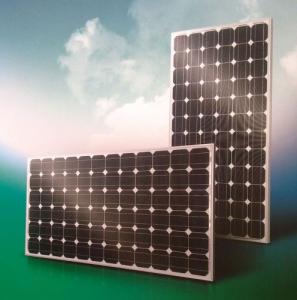Solar power has been making waves in the energy industry for quite some time now, and for good reason. It’s clean, it’s renewable, and it’s becoming more affordable every year. But, as with any new technology, there can be a bit of a learning curve when it comes to setting it up. That’s where solar panel kits come in. They’re designed to make the process of installing solar panels on your home as easy as possible, even if you’re not an expert in the field.
Why Choose a DIY Solar Panel Kit?
The first question you might be asking is, why would you want to install solar panels yourself? Well, there are a few reasons. For one, it can save you a significant amount of money. Hiring a professional to install solar panels can be quite expensive, and by doing it yourself, you can cut out that middleman and keep more of that cash in your pocket. Plus, there’s something undeniably satisfying about being able to say that you did it yourself. It’s a project that not only benefits the environment but also provides a sense of accomplishment.
The Basics of Solar Panel Kits
Solar panel kits come in all shapes and sizes, but they all have a few key components in common. You’ll need solar panels, of course, which are the heart of the system. These panels convert sunlight into electricity. You’ll also need an inverter, which takes the direct current (DC) produced by the panels and converts it into the alternating current (AC) that your home uses. And, of course, you’ll need a way to mount the panels, whether that’s on your roof or on the ground.
Understanding the Components
Let’s dive a bit deeper into each of these components to understand what you’re working with.
– Solar Panels: These are the workhorses of your solar system. They come in various sizes and efficiencies, so you’ll want to choose the ones that best fit your needs and your budget.
– Inverters: There are two main types of inverters: string inverters and microinverters. String inverters are cheaper but less flexible, while microinverters are more expensive but offer more control over each panel’s performance.
– Mounting Systems: The mounting system is crucial for ensuring that your panels are secure and positioned correctly to maximize sunlight exposure.
Planning Your Solar Journey
Before you start assembling your solar panel kit, there are a few things you should consider to make sure your project goes smoothly.
– Assess Your Energy Needs: Look at your electricity bills to understand how much power you use and when you use it most. This will help you determine the size of the system you’ll need.
– Check Local Regulations: Some areas have specific rules about solar installations, so make sure you’re in compliance.
– Consider the Angle and Orientation: The position of your panels can significantly affect their efficiency. South-facing roofs are usually the best, but this can vary depending on your location.
The Installation Process
Now, let’s talk about the actual process of installing your solar panels. Here’s a simplified version of the steps you’ll need to follow.
1. Prepare Your Site: This might involve cleaning your roof or clearing a space in your yard.
2. Install the Mounting System: Follow the manufacturer’s instructions to securely attach the mounting system to your chosen location.
3. Attach the Panels: Once the mounting system is in place, you can start attaching the solar panels. Make sure they’re tightly secured and properly aligned.
4. Install the Inverter: The inverter should be installed near your main electrical panel, and it’s often a good idea to have an electrician help with this step.
5. Connect the System: This is where you’ll connect your solar panels to the inverter and then to your home’s electrical system. Again, professional help is recommended for this step.
6. Inspect and Approve: Before you flip the switch, have your system inspected by a local authority to ensure it meets all safety and performance standards.
Maintenance and Monitoring
After your solar panel system is up and running, there are a few ongoing tasks you’ll need to handle to keep it in top shape.
– Regular Cleaning: Dust and debris can reduce the efficiency of your panels, so regular cleaning is important.
– System Monitoring: Many solar kits come with monitoring systems that allow you to track your system’s performance and spot any potential issues early on.
– Inspect for Damage: Periodically check your panels and mounting system for any signs of wear or damage.
The Benefits of Going Solar
There are numerous benefits to installing a solar panel system, both for you and the environment.
– Financial Savings: Over time, solar panels can save you a significant amount on your energy bills.
– Environmental Impact: By generating your own electricity, you’re reducing your carbon footprint and contributing to a cleaner environment.
– Energy Independence: With solar panels, you’re less reliant on the grid, which can be a great advantage during power outages or when energy prices spike.
Wrapping Up
DIY solar panel kits are a fantastic way to take control of your home’s energy production. They’re affordable, they’re easy to install (with a little bit of planning and effort), and they offer a host of benefits that can save you money and help the environment. So, if you’re ready to join the solar revolution, a DIY solar panel kit might be just what you need to get started.

